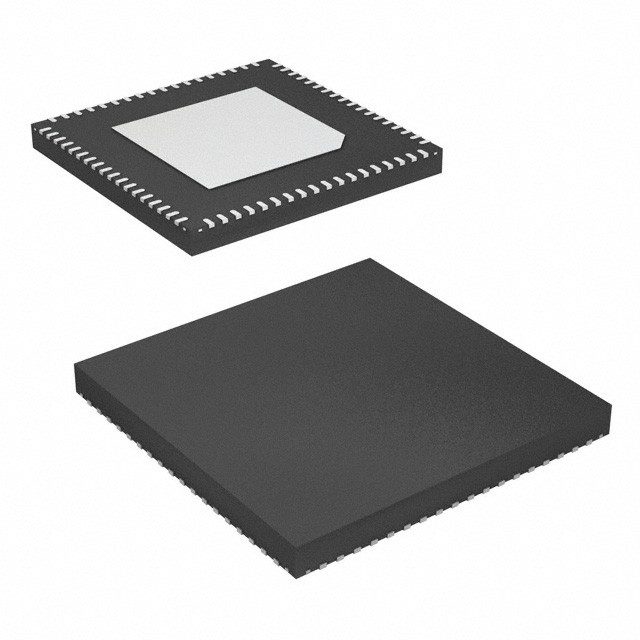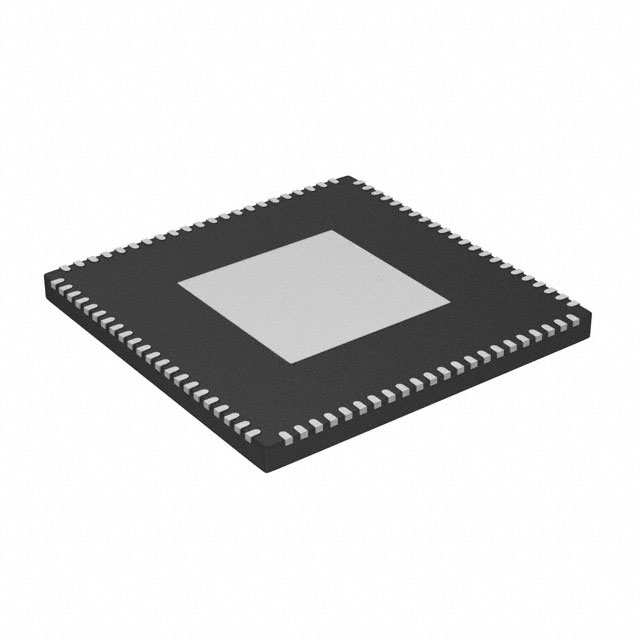

Types of Integrated Circuits and Applications (In Depth Guide)

Types of Integrated Circuits
Electronic devices are built on integrated circuits (ICs), sometimes called microchips or chips. Millions, or even billions, of transistors, resistors, capacitors, and other components are arranged on a silicon wafer to form these miniature circuits. Through the use of integrated circuits, electronics have become smaller, faster, more reliable, and more energy-efficient. Digital, analog, and mixed-signal ICs are just some of the different types of integrated circuits. Everything from computers and smartphones to medical devices, automotive systems, and industrial machinery relies on these chips. Integrated circuits have a wide range of applications across a variety of industries, which are explored in this article.
What is Integrated Circuits?
The most commonly used electronic components in electronic circuits are bipolar junction transistors, diodes, and field effect transistors. An electronic circuit is formed by connecting these components and resistors and capacitors. The discrete circuit type has each component removable from the circuit when required, resulting in a modular system. Diodes, transistors, and capacitors are permanently fabricated on semiconductor wafers in modern electronic circuits.
This circuit is called an Integrated Circuit (IC) because the components are integrated on a semiconductor wafer. Microchips and chips are other terms used to refer to ICs. Transistors have been doubling about every two years since ICs were created, allowing us to fit more transistors in a smaller area. As Moore's Law asserts, technology has exponentially grown over the last 50 years
Types of Integrated Circuits
Digital Integrated Circuits
The logic levels of "0" and "1" represent the inputs and outputs of digital integrated circuits (ICs), which handle discrete signals. Computers, smartphones, and microcontrollers all depend on these circuits for their functionality. In addition to logic gates and flip-flops, digital ICs include multiplexers, microprocessors, and multiplexors. In addition to storing and computing digital information, they control signals as well as process digital information. Microprocessors and microcontrollers, which can perform sophisticated tasks, are more complex than logic ICs, which are divided based on complexity.
Analog Integrated Circuits
A digital integrated circuit deals with discrete signals, whereas an analog one deals with continuous signals. A circuit such as this is essential for converting analog signals, such as light, sound, and temperature, into digital signals. In addition to operational amplifiers and voltage regulators, analog filters are also common analog integrated circuits. Signal amplification, audio processing, and sensor data conversion are among the applications in which they are used. Signal amplification is one of the critical functions of analog ICs for audio devices, medical instruments, and other applications requiring precision signals.
Mixed-Signal Integrated Circuits
Digital and analog functions are combined on mixed-signal integrated circuits. Modern electronics rely on these ICs for interfaces between analog and digital components, as most systems today interface with both. Digital processors, such as those in smartphones, must deal with analog inputs like sound and touch. Digital-to-analog converters (DAC) and analog-to-digital converters (ADC) are examples of mixed-signal integrated circuits. Devices that require seamless analog-to-digital conversion use mixed-signal integrated circuits, including wireless communication systems, automotive sensors, and complex industrial controls.
Power Integrated Circuits
Electricity is distributed in various systems using power ICs. A variety of circuits are essential for optimizing the power efficiency and performance of electronic devices, such as voltage regulators, power management units, and DC-DC converters. Mobile devices like smartphones and electric vehicles as well as large-scale industrial machines use power ICs. To contribute to the overall energy efficiency of a system, these ICs distribute the correct voltage and current levels to the electronic components while minimizing energy loss.
Radio-Frequency Integrated Circuits (RFICs)
It is common for radio-frequency integrated circuits to operate at frequencies between 3 kHz and 300 GHz on the electromagnetic spectrum. ICs manage radio signal transmission and reception, which is essential for wireless communication. Satellite communication systems, smartphones, Wi-Fi routers, and GPS receivers all use RFICs. In order to transmit reliable data over radio frequencies, they include components such as oscillators, amplifiers, mixers, and filters. Modern electronics are becoming increasingly dependent on RFICs as wireless communication continues to grow.
Application-Specific Integrated Circuits (ASICs)
Integrated circuits, or ASICs, are designed specifically for a specific application. Different from general-purpose ICs, which can be used for a variety of purposes, ASICs are specific to a single function, enabling them to perform that function efficiently. Consumer electronics, automotive systems, and telecommunications are among the fields where they are most commonly used. In a secure communication device or in a car, for instance, a specific ASIC might implement a particular encryption algorithm. Although ASICs are more expensive and time-consuming to develop than off-the-shelf ICs, their advantage lies in their ability to perform their dedicated tasks at high efficiency.
Programmable Integrated Circuits (PICs) and Field-Programmable Gate Arrays (FPGAs)
Circuit design can be customized and flexible with programmable ICs, such as PICs and FPGAs. Designers can modify the logic and functionality of these ICs after manufacturing, depending on their application needs. It is generally used in simple control tasks such as robotics and industrial automation as a microcontroller with programmable memory and I/O ports. High-frequency trading systems, signal processing, and prototyping of hardware designs benefit from FPGAs, which are more complex and offer high-speed performance. In fields requiring frequent updates or changes in functionality, these ICs are highly versatile due to their ability to reconfigure.
Applications
Consumer Electronics
A majority of consumer electronics are powered by integrated circuits, including smartphones, laptops, tablets, televisions, and gaming consoles. Data is processed, applications are run, as well as the battery is managed and wireless communication is ensured through Wi-Fi and cellular networks by ICs in smartphones. As for real-world signals like sound and touch, analog ICs manage them through analog signals like microprocessors and memory chips. As a result of the use of integrated circuits, these devices are compact and energy-efficient, while still maintaining high performance while addressing complex tasks.
Automotive Systems
A major part of the control systems in modern automobiles, as well as the advanced driver assistance systems (ADAS) and information systems, are integrated circuits. An engine control unit (ECU) uses integrated circuits (ICs) to control fuel injection, emissions, and engine performance. The airbags deploy and traction control is also enabled by these systems. A more connected and automated driving experience is made possible by ICs for navigation, communication, and entertainment systems. EVs and autonomous vehicles are causing a rapid increase in the demand for automotive ICs.
Medical Devices
A wide variety of health conditions are monitored, diagnosed, and treated using integrated circuits in modern medical technology. In medical imaging equipment, like MRIs and CT scanners, ICs assist in processing complex data so detailed images can be created. Among portable health trackers, blood glucose meters, and heart rate monitors, they are also found. A pacemaker or hearing aid relies on ICs to provide reliable and long-lasting performance. It is critical that these ICs perform critical, life-saving functions efficiently, precisely, and with high reliability.
Industrial Automation and Control Systems
Automation, robotics, and manufacturing systems rely heavily on integrated circuits in industrial environments. The precision control of machinery, sensors, and actuators is enabled by programmable ICs, such as FPGAs and microcontrollers. Monitoring variables such as temperature, pressure, and humidity with ICs ensures that industrial equipment operates safely. As part of the Industrial Internet of Things (IIoT) and smart manufacturing, they are also essential for communication between machines and data systems. In industries ranging from automotive manufacturing to pharmaceuticals, these systems reduce human intervention and errors.
Telecommunications
Communication over various networks is made possible with the help of integrated circuits in the telecommunications industry. In smartphones, routers, modems, and satellite communication systems, ICs process data, transmit signals, and receive signals. In wireless communication, radio-frequency integrated circuits handle high-frequency signals, whereas digital integrated circuits handle data transmission and processing. In addition to supporting mobile and broadband networks, ICs also play a key role in networking equipment. Global communication, 5G networks, and high-speed internet are driving IC technology advances in telecommunications.
Aerospace and Defense
Aircraft avionics systems, navigation systems, radar systems, and communication systems all use integrated circuits in aerospace and defense applications. It is often necessary to use ICs in harsh and extreme environments to ensure accurate, reliable functioning of critical systems. Weapon guidance systems, surveillance equipment, and secure communication devices contain ICs in military and defense systems. To operate under extreme conditions of temperature, pressure, and radiation, these ICs must meet strict reliability, security, and performance standards. Space and defense technologies, such as satellite systems, drones, and defense technologies, are becoming increasingly complex.
Computers and Data Centers
A fundamental component of computing is the integrated circuit, which is used in both small consumer devices and large-scale data centers. The IC is the basis of all computing devices including CPUs, memory chips (RAM), and solid state drives (SSD). Server farms utilize ICs to manage data flow, process data, and store large amounts of information. For personal computing, AI, and machine learning workloads in enterprise environments, ICs enable faster processing speeds, greater memory capacities, and more efficient power usage.
Wrapping Up
Integrated circuits have transformed electronics, enabling devices to function more efficiently, operate faster, and become smaller. Each type of integrated circuit serves a unique purpose in modern technology, from the foundational digital and analog ICs to RFICs and ASICs. Consumer electronics to automotive systems, medical devices to aerospace to renewable energy are among the many sectors in which they are used. Technology evolution in ICs continues to enable smarter, more connected systems, seamless communication, and advanced computing. In the coming decades, integrating circuits will continue to grow in sophistication and efficiency, making them indispensable to the future of technology.
Subscribe to JMBom Electronics !













